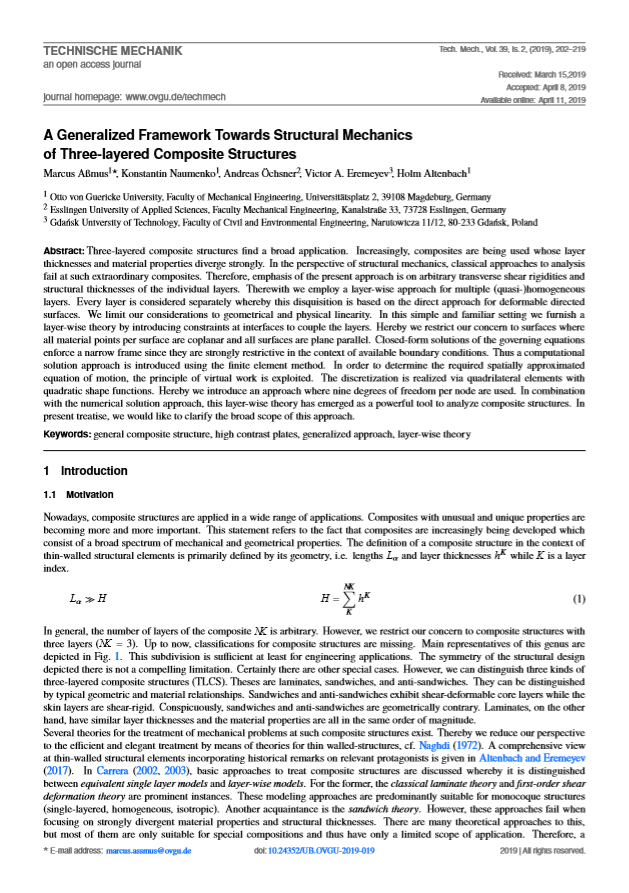A generalized framework towards structural mechanics of three-layered composite structures
DOI:
https://doi.org/10.24352/UB.OVGU-2019-019Keywords:
general composite structure, high contrast plates, generalized approach, layer-wise theoryAbstract
Three-layered composite structures find a broad application. Increasingly, composites are being used whose layer thicknesses and material properties diverge strongly. In the perspective of structural mechanics, classical approaches to analys is fail at such extraordinary composites. Therefore, emphasis of the present approach is on arbitrary transverse shear rigidities and structural thicknesses of the individual layers. Therewith we employ a layer-wise approach for multiple (quasi-)homogeneous layers. Every layer is considered separately whereby this disquisition is based on the direct approach for deformable directed surfaces. We limit our considerations to geometrical and physical linearity. In this simple and familiar setting we furnish a layer-wise theory by introducing constraints at interfaces to couple the layers. Hereby we restrict our concern to surfaces where all material points per surface are coplanar and all surfaces are plane parallel. Closed-form solutions of the governing equations enforce an arrow frame since they are strongly restrictive in the context of available boundary conditions. Thusacomputational solution approach is introduced using the finite element method. In order to determine the required spatially approximated equation of motion, the principle of virtual work is exploited. The discretization is realized via quadrilateral elements with quadratic shape functions. Here by we introduce an approach where nine degrees of freedom per node are used. In combination with the numerical solution approach, this layer-wise theory has emerged as a powerful tool to analyze omposite tructures. In present reatise, e ould ike o arify he road cope f his pproach.





